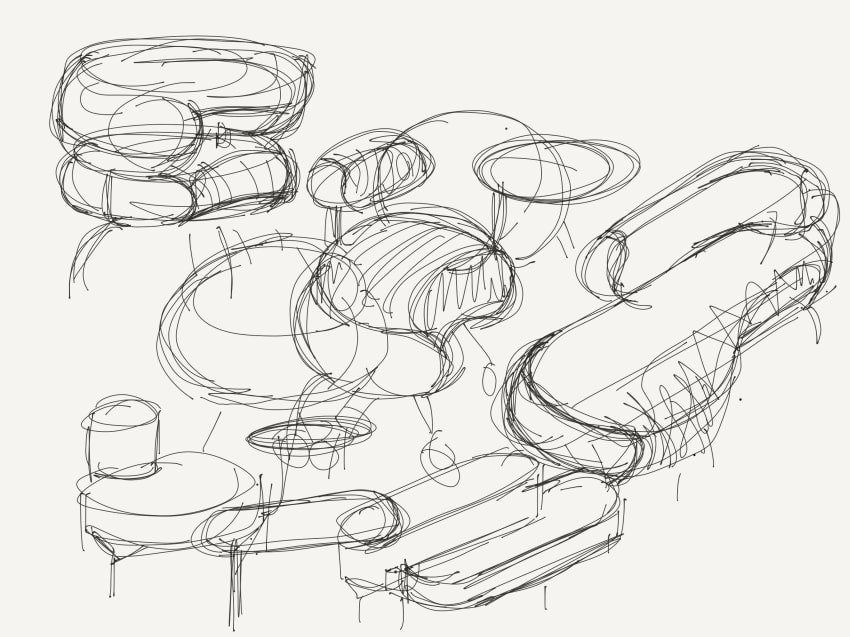/f/128525/1845x886/500086734b/2024-09-30-08_25_48-medienwiedergabe.png)
/f/128525/1845x886/500086734b/2024-09-30-08_25_48-medienwiedergabe.png)
From the idea to the finished product: portfolio vision - portfolio strategy - sustainable and innovative product solutions
Together with König + Neurath customers and specialist dealers, we develop the requirements for our product portfolio according to current market and user criteria. We take into account different target groups and their specific needs. A clear portfolio vision helps König + Neurath to think ahead and assign all development projects to a long-term plan. It is then implemented by us, supported by our clearly defined portfolio strategy and based on economic and sustainable criteria.
Everything from a single source
Thanks to the high level of vertical integration, König + Neurath brings together all the important processes for manufacturing a product under one roof:
Product design, product conception, product construction, series production and quality control - everything takes place at the production site in Karben.
Our product design is crucial for a circular economy. Only when products are conceived and designed from a "cradle to cradle“ perspective is it possible to recycle materials. "Cradle to Cradle“ literally means "from the cradle to the cradle“ and aims to ensure that materials used in the manufacture of a product circulate in closed material cycles. This means that a product that is no longer needed does not become waste, but provides the raw materials for a new product.
In order to incorporate this basic idea into product development, König + Neurath has defined clear guidelines under the term „Design for Environment“.
OUR SPECIFICATIONS FOR “DESIGN FOR ENVIRONMENT”
The following criteria are taken into account in the development and design of König + Neurath products:
In the design of the products:
- a consistent modular design (modular principle) is ensured. All products must be able to be converted, modified and retrofitted during their life cycle.
- the use of materials must be kept as low as possible and the consumption of resources must be reduced to a minimum.
- it is timeless and not orientated towards short-term trends. It has a formal, aesthetically long service life and thus increases the life cycle of the products

Our choice of materials takes into account:
- the use of renewable raw materials.
- the use of recyclable and/or biodegradable raw materials.
- the general use of recyclates for non-visible plastic parts.
The use of recycled materials should be checked for visible plastic parts. - the use of recyclable materials is preferred.
- the use of common plastics that are harmless to health.
- the use of only environmentally friendly and health-friendly materials.
- the minimization of emissions from products (pollutants, vapours, etc.).
- the avoidance of materials that are not suitable for material recycling.
- the restriction of material diversity.
The components must be designed for production and assembly in such a way that
- they can also be assembled or modified on site in a reasonable time using standard tools (ease of repair).
- the highest possible proportion of in-house production components is realized. This increases transportation and packaging efficiency. Eco-efficiency (cost-effectiveness of the process in relation to the impact on the environment) must always be assessed.
- non-detachable bonding should be avoided wherever possible.
- an economical use of energy, water and operating materials can be achieved.
- 100 % of waste that cannot be reused is avoided.
- all waste must be recycled or reused.
For delivery and maintenance, particular care must be taken to ensure that the products
- use as little packaging material as possible; reusable packaging (furniture covers) is preferred.
- can be serviced and repaired by our own customer service department, but also by other specialised personnel. To this end, assembly and disassembly instructions are created and corresponding internal training courses are offered.
To ensure that the furniture can be reused and recycled, it must be
- possible to dismantle all components with standard tools within a reasonable time and
- all plastic parts weighing 20 grams or more must be labeled (in accordance with DIN EN ISO 11469).
When all that remains at the end of the product life cycle is recycling,
- we can separate our furniture into steel, aluminum, plastics, wood-based materials, electronic recyclables and other materials.
- we support customers with a take-back concept that allows them to use the products for longer, repair them or return materials to the material cycles.
- 100% of non-recyclable waste is avoided.
For all of the above points, the economic efficiency, market availability and technical and structural suitability must always be checked.
In individual cases, deviations from the design-for-environment priorities may be appropriate.
Contact us directly:
König + Neurath (UK) Limited
+44 20 74909340
Write us
Ground and Lower Ground Floor
75 Farringdon Road
London EC1M 3JY